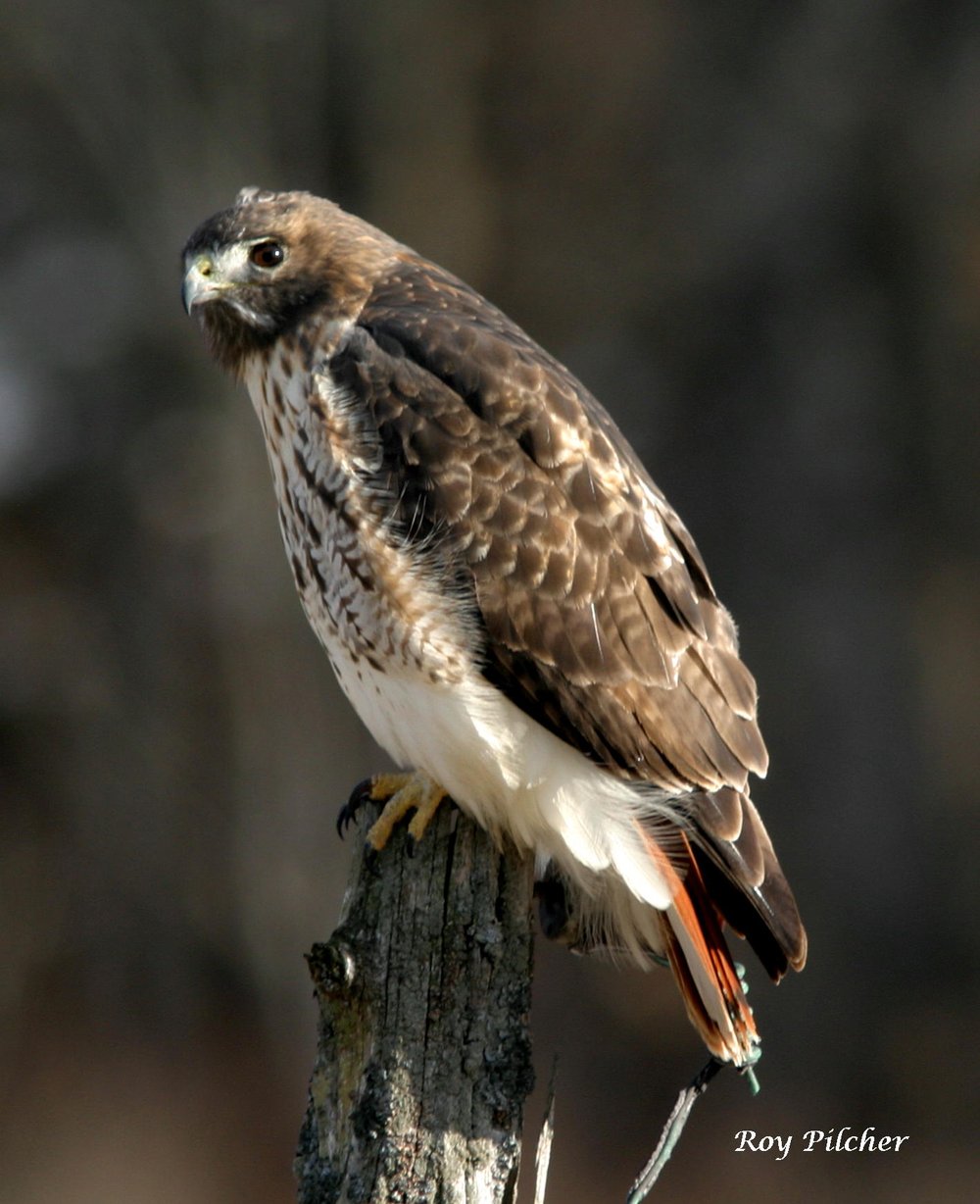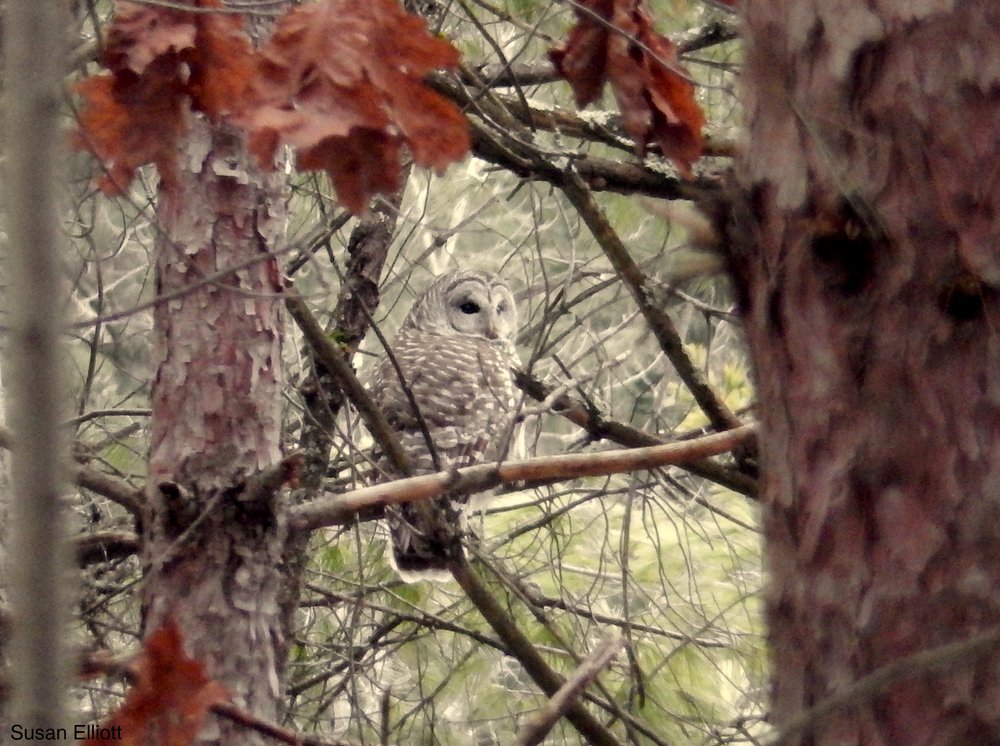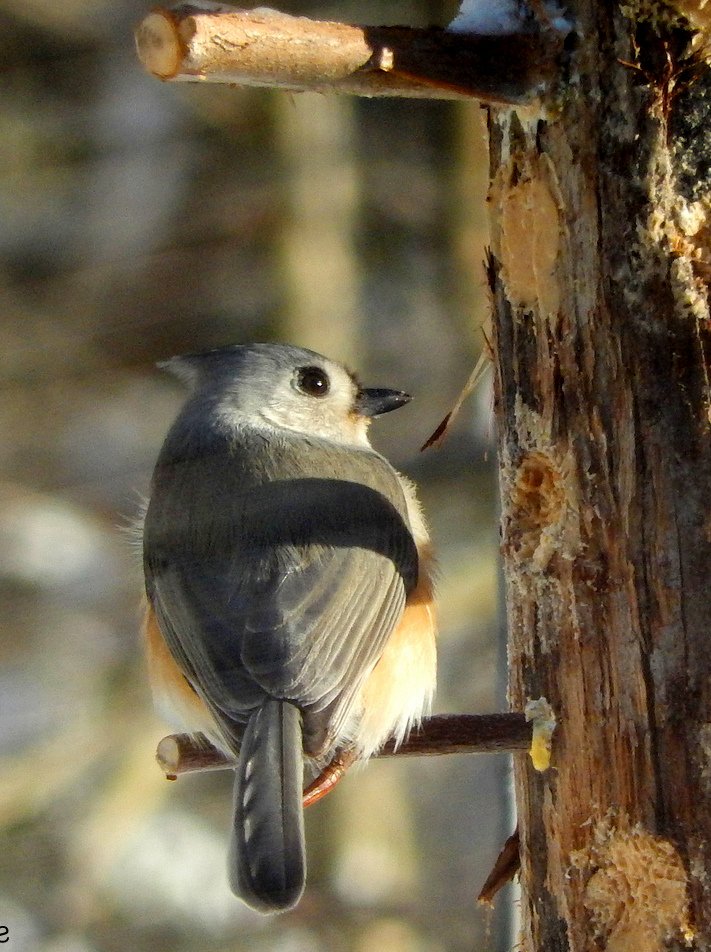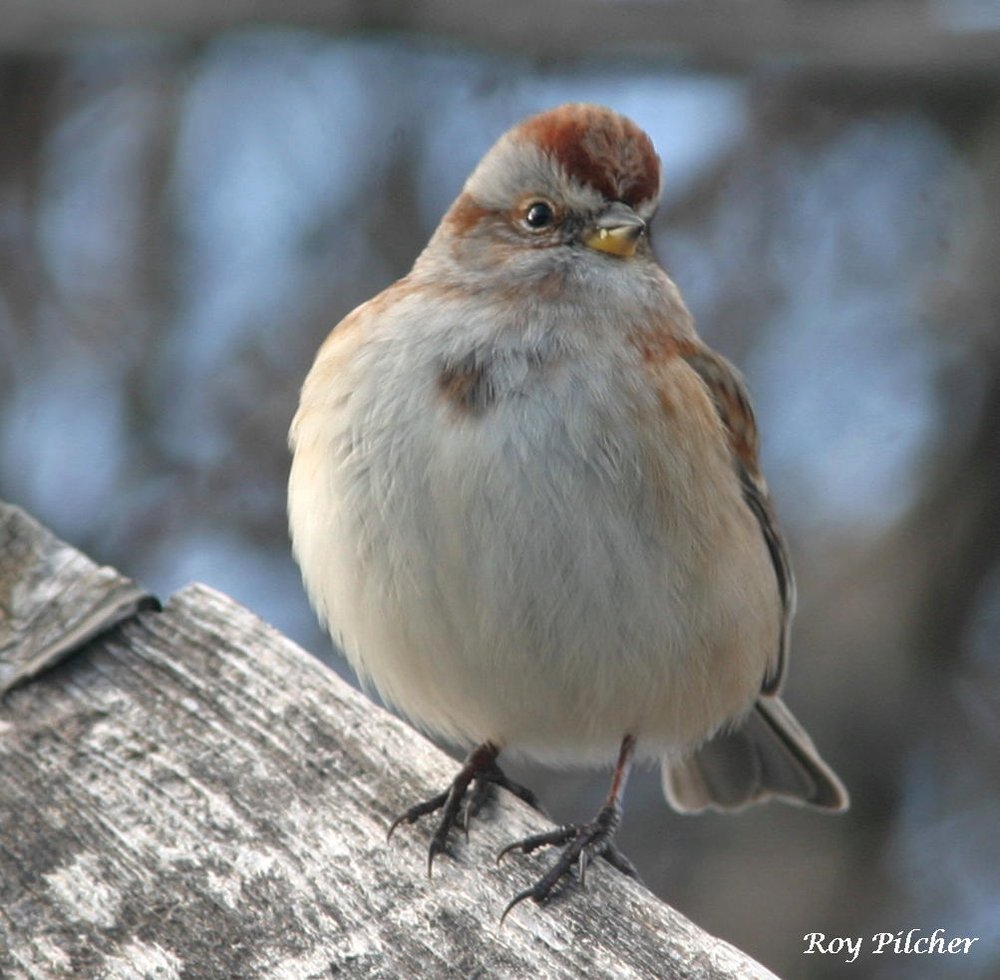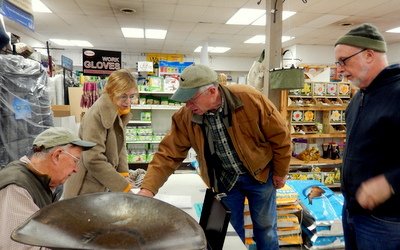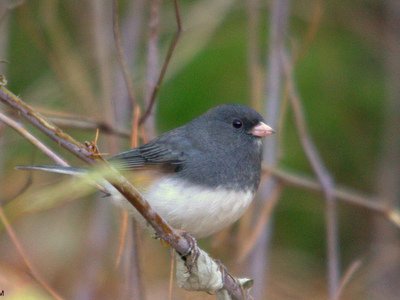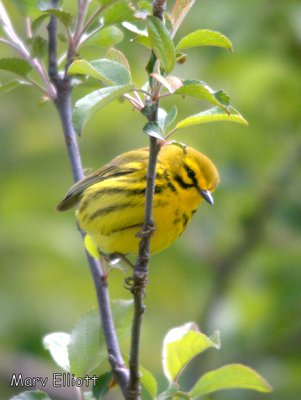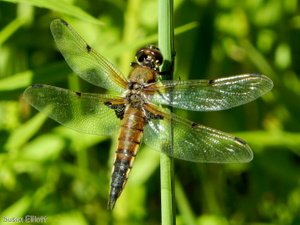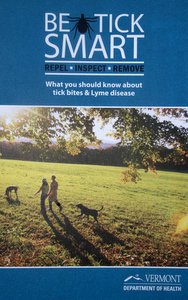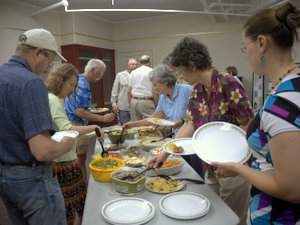 On June 25, RCAS members gathered for our annual meeting and election of officers. Co-presidents Roy Pilcher and Marv Elliott thanked board members and volunteers for all that has been accomplished during the past year.
On June 25, RCAS members gathered for our annual meeting and election of officers. Co-presidents Roy Pilcher and Marv Elliott thanked board members and volunteers for all that has been accomplished during the past year.
Marv added that with more volunteers we can improve what we do, lighten the load for everyone, and look to expand our mission: To foster an enjoyment of birds and the preservation of their habitat.
A delicious potluck supper was served before the official meeting began. After the annual report was given, there was a presentation of member photos, which was a huge success. If you missed the meeting, or would like to see the wonderful pictures again, click here for the RCAS Flickr page.
If you want to join Rutland County Audubon or are interested in volunteering, please email us at birding@rutlandcountyaudubon.org.
This year’s annual report:
2013-14 Rutland County Audubon Annual Report
CONSERVATION/ENVIRONMENTAL ACTION
Participated in the annual Vermont Green-Up Day at West Rutland Marsh on 05/03/2014 for the twenty-second consecutive year.
As of today’s annual meeting, RCAS has undertaken 155 consecutive months of bird monitoring of the West Rutland Marsh, a Vermont Important Bird Area and Rutland County Audubon designated Birding Hotspot. One hundred forty-six bird species have been tallied by 1,797 participants. All data is recorded on eBird.
Birding Hot Spot monitoring continued at Aitken State Forest, Bomoseen State Park, Pomainville WMA, Cadwell Loop of the Pittsford Trails, Diamond Run Nature Trails, Lefferts Pond, Kent Pond, Northwood Park, Pleasant Street Power Line and Tinmouth Chanel. All data is recorded on eBird.
Mountain Top Farm bird monitoring in Chittenden continued under the spring/summer/fall protocol initiated on 06/14/2012 under the direction of Steve Hagenbuch, Audubon Vermont’s Forest Bird Initiative biologist.
 Secretary Kathleen Guinness records the minutesParticipated for a third year in a monitoring program along the VELCO power line right of way for seven brush/grassland bird species in particular the Golden-winged Warbler.
Secretary Kathleen Guinness records the minutesParticipated for a third year in a monitoring program along the VELCO power line right of way for seven brush/grassland bird species in particular the Golden-winged Warbler.
Currently undertaking a bird survey of the Blueberry Hill Wildlife Management Area, consisting of four parcels, on behalf of Vermont Forests and Parks.
Financially supported the Four Winds program at Neshobe Elementary School, the Vermont Bobolink Project, the Salamander Crossing Project and the Vermont Center for Ecostudies and their sponsorship of the VT eBird portal.
EDUCATION AND OUTREACH
Participated in the Green Mountain College Orientation Day in August.
Maintained the kiosk and immediate area at the entrance of the West Rutland Marsh. Signage is renewed and marsh-related information posted. Minor repair work was undertaken on the boardwalk
Updated bird lists for the West Rutland Marsh, Pomainville WMA and the Rutland Community Garden information kiosks. A link to the RCAS birding hotspot is on the Pittsford Trails webpage.
Sponsored Joan Hoffmann, artist, jointly with the Chaffee Arts Center for a program on 01/28/2014.
Sponsored a program by Sara Zahendra from the Vermont Center for Ecostudies on “Bumblebees” at the Rutland Free Library on 02/26/2014.
Sponsored Marv Elliott, RCAS co-president’s “Texas Birding” presentation at the Brandon Library on 04/08/2014 and at the Rutland Public Library on 05/05/2014.
Created a display for the Vermont State Fair’s Forestry Pavilion in Rutland. This year a raffle was included for a 50-lb. bag of bird seed. Thanks to Kathleen Guinness and Marsha Booker for their leadership.
Continued with the Audubon Adventures program. Currently in use in 7 classrooms and two after-school programs, thanks to coordinator Marsha Booker.
Submitted the West Rutland Marsh annual report to the Town of West Rutland to be incorporated into their annual Town Report.
ADVOCACY
RCAS continues to support the work of the local based USDA/NRCS office in the expansion of the Wetland Reserve Program particularly along the Otter Creek and most recently involving a newly acquired 1,300-acre spread in Brandon.
Participated in several hearings on a Solar Power Project proposed for Rutland Town.
It is noted that the proposed siting wind turbine project along the Taconic Mountain Range in Rutland County has been withdrawn. RCAS was opposed to the project because of its potential negative impact on raptor migrations along the siting ridge.
ORGANIZATION
Monthly board meetings, scheduled for the third Thursday of each month, were held throughout the year except December, (Christmas Bird Count), and June, (Annual Meeting) and one “snow day”.
A first and potentially annual pot-luck “Member Appreciation” gathering was held on 03/08/2014 in recognition of Roy’s contributions to Rutland County Audubon over the past 40 years!
A full delegation of RCAS members attended the Fall Vermont Chapter Assembly on 11/16/2013 at the Green Mountain Audubon Center in Huntington and the Spring Assembly at the Birds of Vermont Museum in Huntington on 04/16/2013 hosted by Green Mountain Audubon.
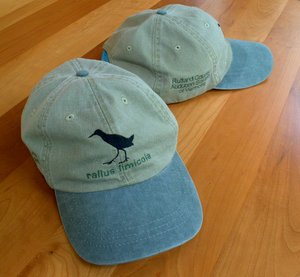 Current RCAS membership stands at ~310 National Members.
Current RCAS membership stands at ~310 National Members.
The continuously developing website averages in excess of 2,000 viewers per month of which more than 600 are unique viewers. Thanks to Webmaster David Jenne and Sue Elliott. Email alerts for new website articles and upcoming events are sent regularly by Tim Abraham.
The RCAS Flickr page for photos of the birds of Rutland County and Audubon is updated regularly.
The RCAS Facebook page currently has 107 ‘likes.’
RCAS accounts for 2012-2013 were reviewed and found in order by George Wetmore.
RCAS now has its own personalized cap designed by Ralph Nimtz and proudly worn by many members!
ACTIVITIES
Sponsored the 20th “Annual West Rutland Butterfly Count” on 07/06/2013. Eight participants tallied 21 species and 112 individual butterflies. The numbers reflect one of the lowest counts over the years. Data all entered on the North America Butterfly Association website.
The annual “Mount Philo Broad-winged Hawk Migration Watch” field trip took place on 09/14/2013. An extension to Addison County provided views of Golden Plover, Pectoral Sandpiper and Baird’s Sandpiper.
 RCAS undertook Bird Seed Sales and Membership Recruitment drives at Garland’s Agway in Rutland on 11/02/2013 and at Brandon’s new Blue Seal facility on 01/18/2014.
RCAS undertook Bird Seed Sales and Membership Recruitment drives at Garland’s Agway in Rutland on 11/02/2013 and at Brandon’s new Blue Seal facility on 01/18/2014.
The 40th “Annual Christmas Bird Count and Pot Luck Supper” was held on 12/28/2013. Thirty participants tallied 51 species representing 8,760 individual birds. Numbers were well within the ten-year running averages. All Christmas Bird Count data is entered on eBird.
Champlain Valley birding field trip, “Winter Regulars and Rarities” was held 01/11/2014, Sue Wetmore leader.
RCAS participated in the Great Backyard Bird Count, 02/14/2014-02/17/2014.
Century County Count XIX attracted 12 participants who recorded 90 species during 13 hours of birding on Saturday, 05/31/2014. Twenty-five checklists were submitted to eBird. Donations amounting to $75 were directed to Audubon Vermont toward their bird monitoring projects.
The Annual Meeting and Social was held at the Proctor Free Library on Wednesday, 06/25/2014. “The program was a “Show and Tell” of members' favorite wildlife images.
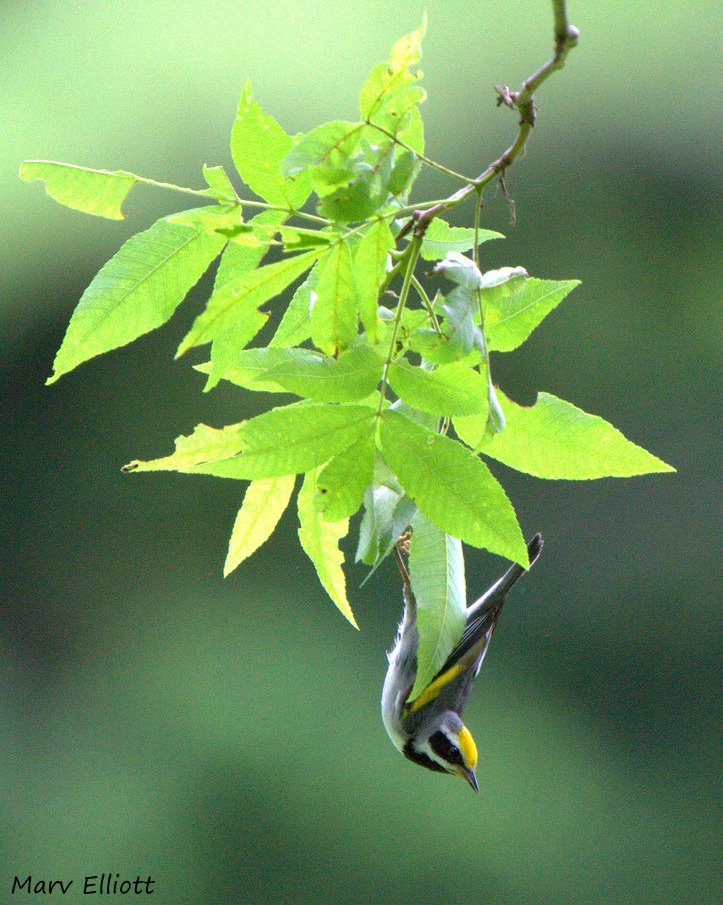 Golden-winged Warbler/photo by Mark LaBarrThe Golden-winged Warbler has been in the bird news a lot lately, but mostly for the wrong reason. Its numbers are declining at an alarming rate. Suitable habitat is getting harder for it to find. Also, it is being out-competed by its cousin, the Blue-winged Warbler, with which it hybridizes.
Golden-winged Warbler/photo by Mark LaBarrThe Golden-winged Warbler has been in the bird news a lot lately, but mostly for the wrong reason. Its numbers are declining at an alarming rate. Suitable habitat is getting harder for it to find. Also, it is being out-competed by its cousin, the Blue-winged Warbler, with which it hybridizes.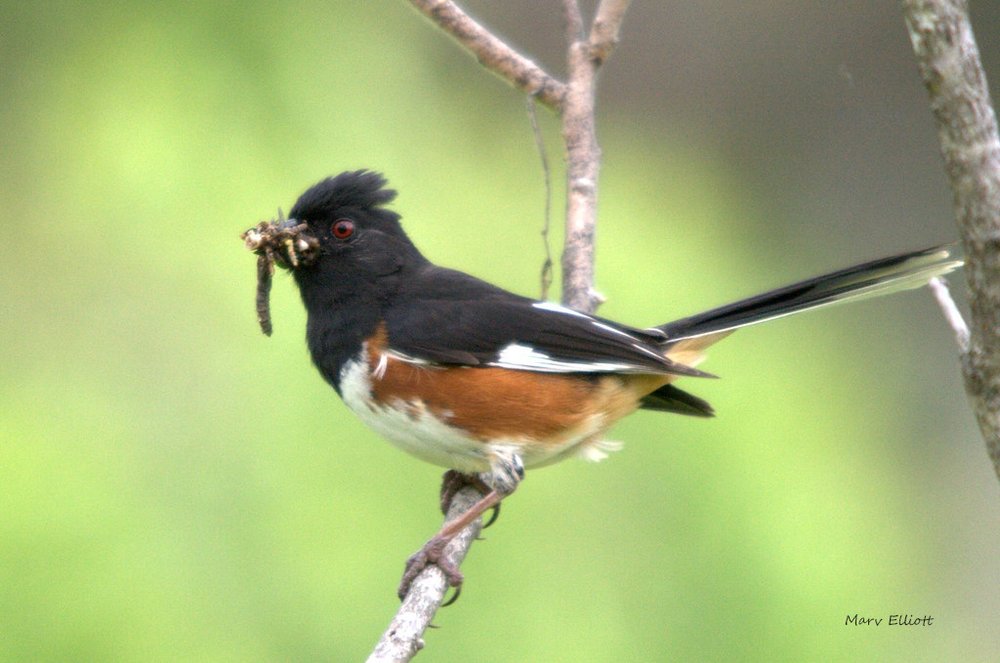 Good citizen scientists always love a project! For the past three years Audubon Vermont has partnered with VELCO (the Vermont Electric Power Company) to determine the population and location of Golden-winged Warblers and the other above named species along VELCO’s power lines in the Champlain Valley. Rutland County Audubon members and other volunteers from Otter Creek Audubon and Green Mountain Audubon took to the power lines enthusiastically (what true birder can resist birding with a purpose?).
Good citizen scientists always love a project! For the past three years Audubon Vermont has partnered with VELCO (the Vermont Electric Power Company) to determine the population and location of Golden-winged Warblers and the other above named species along VELCO’s power lines in the Champlain Valley. Rutland County Audubon members and other volunteers from Otter Creek Audubon and Green Mountain Audubon took to the power lines enthusiastically (what true birder can resist birding with a purpose?).